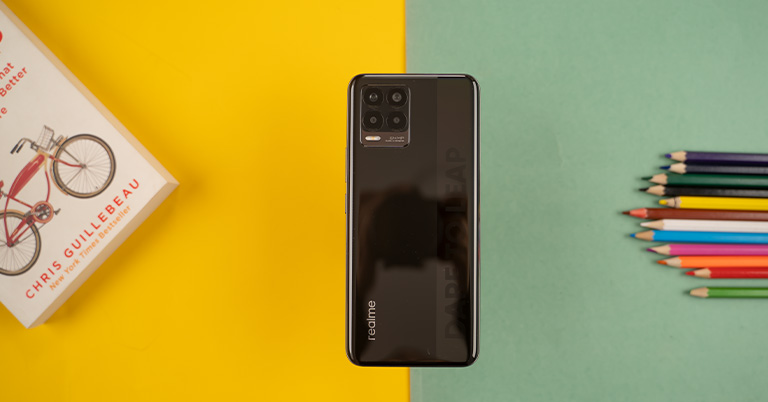
Realme’s number series always invites comparison against the Note lineup from Redmi, and rightfully so. While the new Redmi Note 10 series has wowed everyone (including us) with all the strides Xiaomi has been able to make on the new iteration, the Realme 8 and 8 Pro aren’t enjoying the same degree of praise. So, this has been a little preview of what’s in store on the forthcoming review of the Realme 8.
Moreover, it doesn’t help how the company has chosen to bring only a handful of upgrades compared to the last-gen Realme 7 while staying relatively non-competitive in the pricing department. But does that mean you should flat-out dismiss the Realme 8 in favor of the Redmi Note 10 or the 10 Pro? I don’t think so. Let’s discover more in this review of the Realme 8.
Realme 8 Specifications:
- Body: 73.9 x 160.6 x 7.99mm, 177 gm
- Display: 6.4-inches Super AMOLED panel, 60Hz refresh rate, 180Hz touch sampling rate, 409 PPI, 1000 nits peak brightness
- Resolution: Full-HD+ (2400 x 1080 pixels), 20:9 aspect ratio
- Chipset: MediaTek Helio G95 (12nm)
- CPU: Octa-core (2×2.05 GHz Cortex-A76 & 6×2.0 GHz Cortex-A55)
- GPU: Arm Mali-G76 MC4
- Memory: 4/6/8GB LPDDR4X RAM, 128GB UFS 2.1 storage (expandable)
- Software & UI: Android 11 with Realme UI 2.0 on top
- Rear Camera: Quad-camera;
– 64MP f/1.79 primary lens, PDAF
– 8MP f/2.25 ultra-wide lens, 119º FOV
– 2MP f/2.4 macro lens, 4CM focus
– 2MP f/2.4 B&W sensor - Front Camera: 16MP f/2.45 Sony IMX471 sensor (punch-hole)
- Audio: Bottom-firing speaker, 3.5mm headphone jack
- Security: Optical in-display fingerprint scanner, Face unlock
- Sensors: Acceleration, Gyroscope, Magnetic Induction, Proximity, Light
- Connectivity: Dual-SIM (Nano), WiFi 802.11 a/b/g/n/ac (Dual-band), Bluetooth 5.1, GPS / AGPS / Glonass / Galileo / Beidou, USB Type-C, 4G LTE
- Battery: 5000mAh with 30W Dart Charge (25W adapter provided)
- Color options: Cyber Silver, Cyber Black
- Price in Nepal: Rs. 28,799 (6/128GB) | Rs. 30,499 (8/128GB)
Realme 8 Review:
Design & Build
- Glass front, polycarbonate body
- Lightweight, ergonomic build quality
As usual, allow me to start things off with the design. Seeing how this aspect has become one of the benchmarks for Realme phones, the company has put a fair effort into making the Realme 8’s design as remarkable as possible. The main focus of this year’s number series has been in slimming down the dimensions while reducing the weight as well. Scaling 8mm in thickness and weighing just 177 grams, it is one of the most ergonomic phones I’ve held this year.
But don’t get any wrong idea—this is by no means a compact phone. It’s just that Realme 8 stands out in the sea of bulky smartphones that don’t find the right balance between form and function. Having said that, I find Realme’s decision to flatten the frames a bit weird. I would’ve preferred the rear panel and the side frames to blend into one another but this design choice means the phone doesn’t feel as handy as it could have.
Please don’t “Dare To Leap”, Realme
Then there’s the cartoonishly large “Dare To Leap” branding slapped at the back of the phone. Seriously, who finds this anything but ugly and superfluous? Thankfully, the Cyber Black variant that I have doesn’t gloat Realme’s slogan nearly as loud as the Cyber Silver color option. And the company’s finally had it with these complaints as the new Realme 8 5G skips this unnecessary design principle.
Moving on, this is an all-plastic phone which is the norm for devices in this price range. But, Realme could’ve had an upper hand against the Redmi Note 10 series by including a glass back here. Anyway, this glossy back also attracts a ton of fingerprints and smudges so applying the silicone protective case is a wise decision. Moreover, the camera module with its subtle colorful reflections also results in slight wobbles when placed on a flat surface.

But I’m more annoyed by how easily and frequently dust accumulated to the edges of the camera bump and the lenses themselves. As a result, I’m reminded to clean it up almost every time I want to click a picture. Not that it’s required every single time, but you get the idea. Yet, Realme 8 doesn’t have a manufacturing defect such that dust particles manage to enter the camera module.
Solid build quality
Talking about production standards, we’d mentioned how our unit of the Realme 7 suffered from little creaks on the side. However, there’s no such issue on the Realme 8 and it’s solid as a rock.
The buttons are well placed and offer nice tactile feedback too. The left frame stays mostly clean, except for the SIM slot which can accept two SIMs and a micro SD card at the same time. All in all, the Realme 8 is a little short of hitting the home run in terms of its design. The phone fits comfortably in the hand but the flattened side frames and the aforementioned branding could complicate things for some. Plus, it is also void of any hydrophobic coating or IP certification.
Display
- 6.4-inches FHD+ Super AMOLED screen
- 60Hz refresh rate, 1000 nits peak brightness
Okay, let’s now talk about the display. Xiaomi’s leap to using OLED screens in the Redmi Note 10 series meant Realme had to at least match this move in its new number series. While the company’s 7 Pro from last year came with a Super AMOLED display, the standard Realme 7 opted for a standard IPS LCD panel instead. But, this year’s Realme 8 has gotten the AMOLED treatment as well aside from its Pro sibling.
Unfortunately, in doing so, it misses out on a higher refresh rate like in its two earlier iterations. To recall, both Realme 6 and 7 featured a 90Hz display. And I believe missing out on the 90/120Hz refresh rate trend poses a big obstacle for the Realme 8. You see, this phone starts at INR 15,000 which is a little unjustifiable considering the competition.

The thing is, investing just a thousand rupees more gets you the Redmi Note 10 Pro that boasts a smoother 120Hz AMOLED screen among other amenities. With this, the Realme 8 is at an immediate & obvious disadvantage.
Skipping on the high refresh rate train
If you’re a mobile gamer or simply wish to experience a smoother scrolling experience (that you naturally should), the Note 10 Pro comes off as an easy choice between the two. To somewhat compensate for the lack of a higher refresh rate, Realme is providing a 180Hz touch sampling rate on this phone—something equally crucial for mobile gaming enthusiasts.
Despite this, I noticed multiple instances when the display failed to accurately register my touch inputs in games like Call of Duty Mobile and Injustice 2. As a result, the latter’s gameplay would be stuttery to the point where I’d lose the combo meter. But to my delight, Realme was quick enough to push an update that effectively solved this problem.
Its 6.4” Super AMOLED display also brags 1000 nits of peak brightness. And throughout the review period, I haven’t had any trouble regarding outdoor visibility on the Realme 8. Because of its AMOLED heritage, this Full HD screen also supports Always On Display. However, like the Redmi Note 10, its AoD stayed on for like 10 seconds or so only before the update. Additionally, there’s little to zero customization you can make here.
How does this screen compare to the competition?
Now, we know that not all AMOLED screens are created the same. So, I compared its display against that of the Redmi Note 10. In their default settings, I found that contents look noticeably more vibrant on the Realme 8. Switching the color scheme to “Saturated” on the Note 10 blurs the line between the two screens.

Still, when watching HDR videos, I observed Realme 8’s display to be brighter with a slight pop in colors. On some occasions, I noticed how human subjects in the video look a bit washed out on the Note 10 as well.
Besides this, the two phones performed similarly with regard to their viewing angles, contrast levels, and so on. Moving on, you can also stream HD videos on the Realme 8 since it is Widevine L1 certified. When it comes to content consumption on smartphones, I favor a left-aligned punch-hole cutout like on this phone too. So, if browsing the web or watching shows, movies are your top priority, then the Realme 8 won’t disappoint.
For an even better viewing experience, you can also turn on this feature called “OSIE Visual Effect” that supposedly brings out better colors in select apps. But I couldn’t notice it many video streaming platforms I tried like YouTube and Netflix. Furthermore, Realme has skipped on Gorilla Glass protection on this phone too. First high refresh rate and now this—in a bid to deliver an AMOLED display, the company has made a couple of really sensitive downgrades.
Performance
- Octa-core MediaTek Helio G95 SoC (12nm)
- Up to 8GB LPDDR4X RAM, 128GB storage (expandable)
- Realme UI 2.0 based on Android 11 out-of-the-box
Whew, that was a lot. Time to get to the performance side of things. Powering the Realme 8 is the same Helio G95 SoC from MediaTek as its predecessor. While it’s a pretty competent chipset, the lack of an upgrade is a major bummer. Realme has coupled the G95 with 4, 6, or 8GB LPDDR4X RAM and 128GB of UFS 2.1 internal storage.
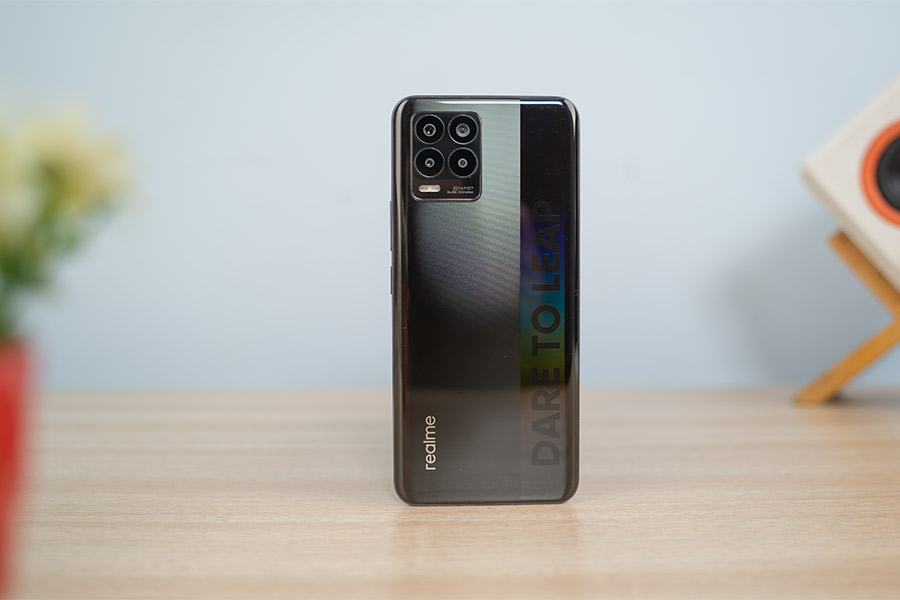
Here, our review unit of Realme 8 with 4/128GB configuration has given little room for complaint. Apps open up quick enough and the RAM management is pretty commendable too—for lightweight apps, that is. More importantly, the phone runs on the latest Realme UI 2.0 based on Android 11. While the company dared to ship its much expensive phones like the X7 series with Android 10-based Realme UI 1.0, this is a positive development. And I must say, this Android skin is pretty well designed.
Realme UI 2.0 is pretty good
From customizing app icon shapes to payment protection, there’s a bunch of interesting features here. Multitasking with floating windows is also quite easy in Realme UI 2.0. Moreover, this UI is ad-free too, so there’s that. Yet, it does have a few shortcomings.
First off, it comes with a bunch of bloatware apps pre-installed, some of which can’t be uninstalled or disabled. I also feel like the rectangular layout of pop-up menus could’ve looked more elegant with proper padding.
The dark mode implementation has left me wanting more as well. Selecting the “Enhanced” style that’s supposed to enable pitch black theme system-wide only comes to effect in the Settings menu. And I’m disregarding third-party apps when I say this. The notification center and other pop-up menus don’t adhere to the set pitch black theme either. Such inconsistency is not that big a deal but is worth pointing out regardless.

I also wished swiping down on the home screen triggered the notification center instead of launching the search menu. At least the phone is preloaded with a bunch of Google apps as default. Plus, Realme UI 2.0 lets you enjoy the Google Discover feed when swiping to the left on the home screen.
Benchmark, benchmark, benchmark!
To come to a verdict about Realme 8’s performance, I compared it against the Redmi Note 10 (4/64GB). Let’s first take a look at a few benchmarks:
| Realme 8 | Redmi Note 10 | ||
| Androbench | Seq. Read | 519.33 MB/s | 503.1 MB/s |
| Seq. Write | 337.05 MB/s | 266.26 MB/s | |
| AnTuTu v8 | Total | 296542 | 237386 |
| CPU | 93073 | 94596 | |
| GPU | 84912 | 41655 | |
| Memory | 60579 | 50848 | |
| UX | 57978 | 50287 | |
| Geekbench 5 | CPU (Single Core) | 526 | 537 |
| CPU (Multi-Core) | 1639 | 1538 | |
| Compute (OpenCL) | 2284 | 416 | |
| PCMark (Work 2.0 Performance) | 9158 | 7887 | |
| 3DMark (Wild Life) | 1453 | 480 | |
I also conducted a couple of app opening and multitasking tests between the two phones.
App list:
| Phone | Netflix | |
| Chrome | Clash Royale | YouTube |
| Messenger | Genshin Impact | Adobe Premiere Rush |
| PUBG Mobile |
Here, Realme 8 managed to complete opening the selected apps in 2 minutes and 3 seconds while the Redmi Note 10 took 7 more seconds. Similarly, the Realme 8 finished the entire test (including multitasking) in 3 minutes and 47 seconds whereas the Note 10 got the job done in 4 minutes and 17 seconds. Weirdly enough, the Note 10 beats the competition in terms of how fast the phone boots up (34.6 seconds > 42.04 seconds).
Besides, I also tried rendering a 107MB 4K video to Full HD using Adobe Premiere Rush to see which phone does it faster. And here, the difference between the two was night and day. While the Realme 8 completed the task in just 2 minutes and 24 seconds, the Redmi Note 10 took its time to finish rendering the video after 5 minutes and 43 seconds.
How about gaming?
On to the gaming side of things, I played a couple of demanding games on the Realme 8 to prepare this review. PUBG Mobile was smoothly playable at Balanced graphics and Ultra frame rate. After about 20 minutes of gameplay, the CPU temperature rose to 40C which is not that bad. Similarly, Call of Duty Mobile plays perfectly fine at High graphics and Max frame rates. There is no disturbance in the gameplay even with Ragdoll and Anti-aliasing turned on.
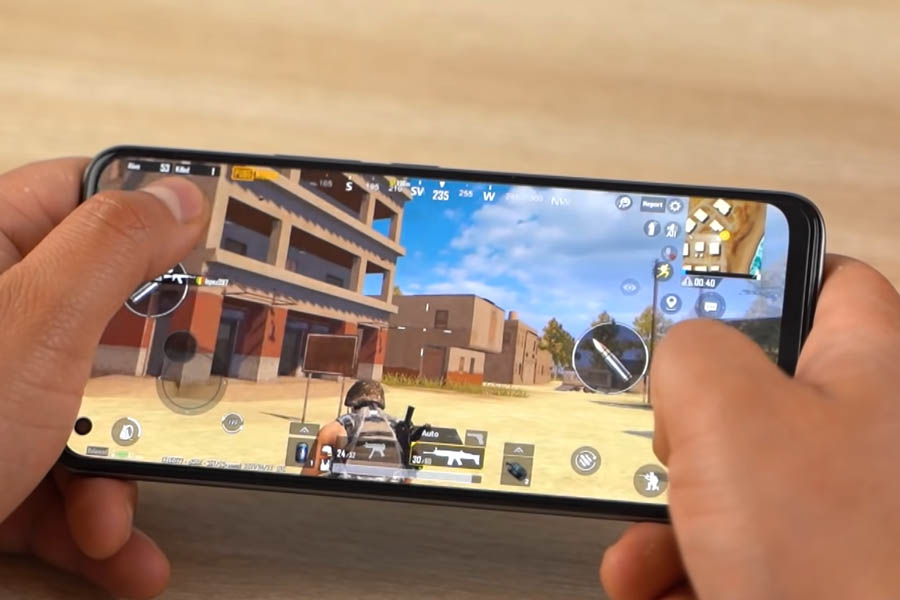
The thermal performance was fairly commendable here as well since after 25 minutes of gaming, the CPU and battery temperature rose to 43C and 40C, respectively. This is warm to touch but I wouldn’t say it’s uncomfortably hot. Also, the phone cools off relatively fast. Finally, I also tried playing Genshin Impact on this phone. At Low graphics 30fps option with anti-aliasing and other visual effects turned off, the gameplay was incredibly stuttery. So, I switched it down to the Lowest graphics and 24fps.
While it was slightly smoother, the final verdict remains that you’ll have a hard time enjoying Genshin Impact on the Realme 8. On the contrary, I was quite impressed with how the phone was able to keep things cool. Even after 46 minutes of continuous gameplay, the CPU and battery temperature only read 42C and 39C, respectively.
Cameras
- Quad camera setup at the back
- (64MP main, 8MP ultra-wide, 2MP macro, 2MP B&W)
- 16MP selfie camera inside the punch-hole cutout
Just like performance, the new Realme 8 doesn’t bring any upgrade in the camera department either. You get the same quad-camera led by a 64MP primary sensor. This is complemented by an 8MP ultrawide, a 2MP macro, and a 2MP depth sensor. For this review, I compared the cameras on Realme 8 against Redmi Note 10’s 48MP quad-camera setup.
Normal Images
Here, the normal daytime images have this warm tone on the Redmi Note 10 with slightly boosted exposure. On the other hand, photos from Realme 8 tend to have a mild reddish tint.
While they’re almost on par in terms of details, Realme 8 delivers a bit over-sharpened images that have a comparatively more natural hue. When zooming in, one can even notice the images to be grainy.
Plus, in some instances, photos seem to be lacking in contrast. However, Realme fixed this issue with an update.
Wideangle Images
Likewise, I found wide-angle images from the Realme 8 to have a better dynamic range too. And sometimes, it even won in terms of HDR processing. Note 10’s shots still have a warm tone like in the normal images but less so here.
It also wins out when it comes to details as the Realme 8 compensates for the resulting grain by making the photos look softer.
Portrait Images
Similarly, portrait images have similar edge detection from both phones. I noticed that Realme 8’s portrait shots have a slight red/pink tint to them and look a little soft too. In contrast, portrait images from Redmi Note 10 have the signature warm tone and better details.
Besides ordinary bokeh effects, the Realme 8 also features a couple of artistic portrait modes like dynamics, neon, and AI color.
Before the aforementioned updates, I’d encountered a couple of instances where the camera app straight up crashed when trying to shoot such portrait photos. Thankfully, that issue is no more. Still, Helio G95’s ISP takes a while to process such shots.
Tilt-Shift photography
Another fun photography mode on the Realme 8 is “Tilt-Shift” where it miniaturizes the scenario. And it’s pretty fun if you ask me.
Moving on, the macro images are comparatively better on the Realme 8, though. It manages to shoot more natural-looking colors. Moreover, close-up photos look sharper on the Realme 8 as well.
And for the admirers of astrophotography, it also features something called Starry Mode. This takes a 4-minute exposure photo to “capture the beauty of stars above”. Unfortunately, it doesn’t work that well.
Selfie Images
Selfies from the Realme 8 are lacking in contrast, look soft, and turn out hazy too. Meanwhile, Redmi Note 10’s selfie camera outputs images with high contrast and the subjects have this reddish tint.
You can notice the low black levels on its photos as the subject looks unnaturally dark too. Portrait selfie images are similar as well.
The Realme 8 does boost the exposure by a bit here but it still looks hazy. On the contrary, Note 10’s portrait selfies have slightly better edge detection while still carrying the reddish hue and dark undertone.
Nighttime Images
Normal nighttime images from the Realme 8 have a little red tint whereas Redmi Note 10 clicks photos with high exposure and better HDR, shadow details.
In certain instances, you’ll notice photos from both phones to be a little grainy.
With night mode turned on, Note 10 smoothens the images to compensate for grains. And, I found Realme 8 to be doing better in terms of highlight control while its images also see a slight boost in contrast.
Videography
Getting to the videos, it’s a clean sweep for Redmi Note 10. In 1080p/30fps, videos look far stable here compared to the Realme 8. Even after Realme’s camera update for improving stabilization, it doesn’t match the standard of Note 10. Furthermore, you can shoot up to 4K/30fps footage from both phones.
While neither do a great job at stabilizing the recording, videos look better from the Note 10 with its relatively proper dynamic range and exposure maintenance. Upfront, both phones max out at 1080p/30fps videos. Here too, videos from Realme 8 have worse dynamic range, unnatural saturation, and excessive exposure.
Battery
- 5000mAh battery with 30W Dart Charge
Nevertheless, the battery life on the Realme 8 is superb. The company has managed to pack a big 5000mAh cell on a comparably sleek form factor—that’s already something. Even with heavy usage consisting of hours of gaming, photo/video shooting, and casual web browsing all through the review period, I managed to net out 7.5-8 hours of screen on time on the Realme 8. Wow!
So, it’s more than fair to say that under a fairly less taxing use case, Realme 8 will easily last you two days. Charging up the battery is equally impressive. You get the 30W Dart Charger inside the box and it took me less than an hour to get from 1 to 100%. 58 minutes to be precise. And I’d like to point something out here.
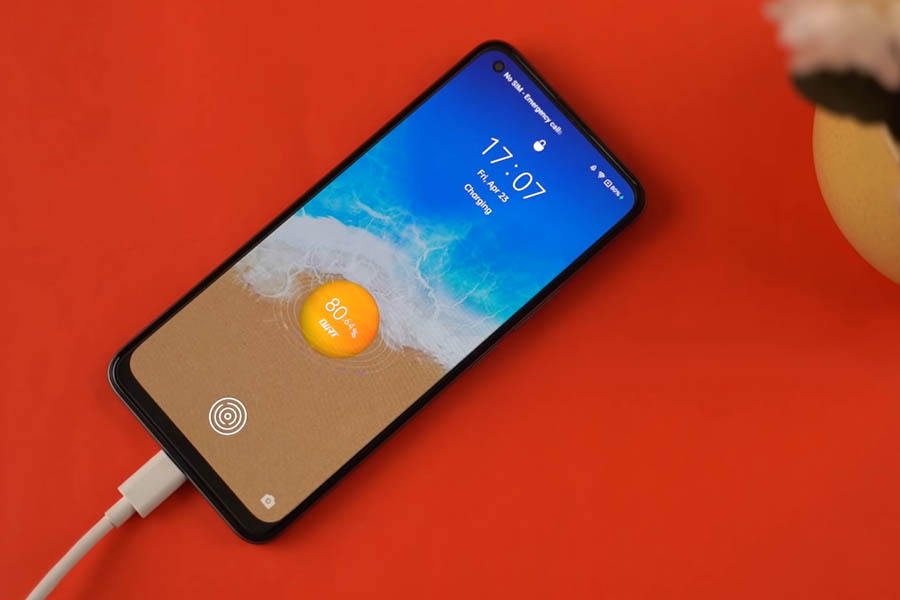
You see, Redmi Note 10 has a 5000mAh battery as well but supports 33W fast charging. Naturally, we can assume the Note 10 juices up faster but that’s not the case. In our test, it took about 1 hour and 22 minutes for the phone to hit the 100% mark from 1%.
Even Xiaomi’s claim says Redmi Note 10 goes from 0-100% in 74 minutes while Realme vouches that the Realme 8 will fully charge in 65 minutes. So, what I’m trying to say is that consumers should stop giving in to big corporation’s number game. Now, it’s too soon to tell what sort of effect these two charging standards will have on battery health in the long run, but you get the idea.
Others
- Hi-Res Audio certified mono speaker
- Optical in-display fingerprint sensor
On the other hand, I’m not impressed with Realme 8’s audio quality. Its Hi-Res Audio certified mono bottom-firing speaker is no match for Redmi Note 10’s stereo speakers (which is Hi-Res Audio certified as well).
While both of them fail to pump out enough details, the audio from Note 10 sounds fuller and doesn’t distort at high volumes. Compared to this, the Realme 8 struggles at high volumes and the sound quality is what you’d expect from a traditional single speaker setup.
I have no complaint regarding the call quality though. Throughout the review period, I set the preferred network type on Realme 8 to “4G/3G/2G” auto and didn’t notice any instances of dropped calls. Similarly, in all of my phone calls, I could hear the people in the receiving end clearly, and vice versa. At max volume, the audio from the earpiece is a little too loud for my taste so I had to dial it down to about 70%.
In-display fingerprint sensor
On the security side of things, Realme has adopted an in-display fingerprint sensor here. Going into this review, my initial assumptions were that I wouldn’t prefer this over the side-mounted fingerprint sensor like on the Redmi Note 10.
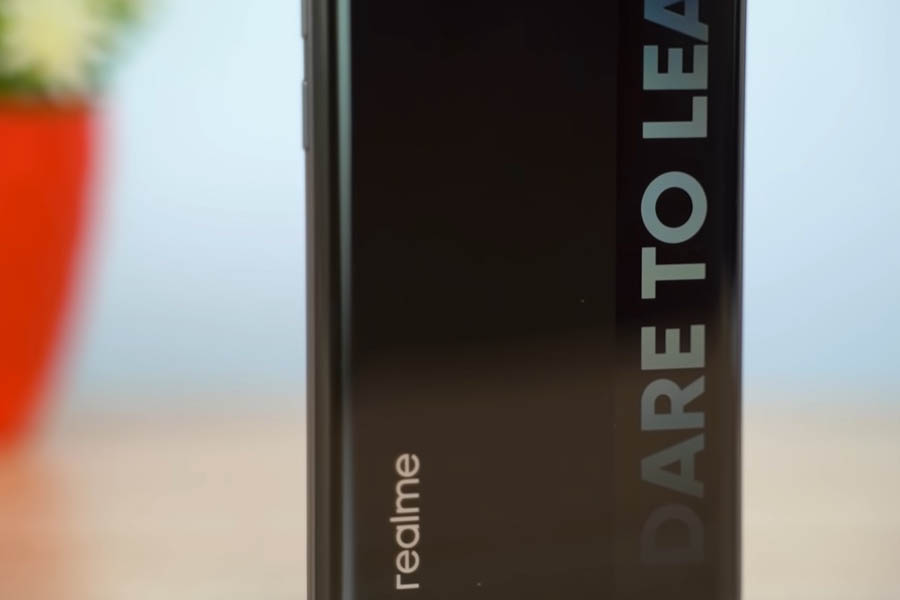
But over time, I’ve grown to like it. And not to forget, the optical sensor has gotten comparatively more responsive as well. On top of this, you can opt for the face unlock option as well which works like a charm in a well-lit environment.
Conclusion
Let’s wrap up its review of the Realme 8. In my opinion, if you are confused between the Realme 8 and the 8 Pro, I think the Realme 8 is a much better value. It delivers an almost similar user experience to that of the Realme 8 Pro. The only major difference is that you’re getting a better 108MP shooter with the 8 Pro.
But looking at its direct competitor, the Redmi Note 10, the Realme 8 doesn’t actually offer any standout feature either—but rather is falling behind in crucial aspects like cameras. So, for its asking price, the Note 10 looks like a better bargain on many fronts. Still, if you prioritize performance more, I think the Realme 8 is not a bad deal either.
- Watch our video review of Realme 8.
Realme 8 Review: Pros & Cons
Pros:
- Ergonomic and lightweight design
- Vibrant Super AMOLED screen
- Competent gaming performance
- Realme UI 2.0 is quite well-designed
- Fun portrait modes, tilt-shift photos
- Excellent battery endurance
- In-display fingerprint scanner
Cons:
- Cartoonish “Dare To Leap” branding
- No high refresh rate display
- Lacking a performance upgrade
- Incompetent smartphone cameras







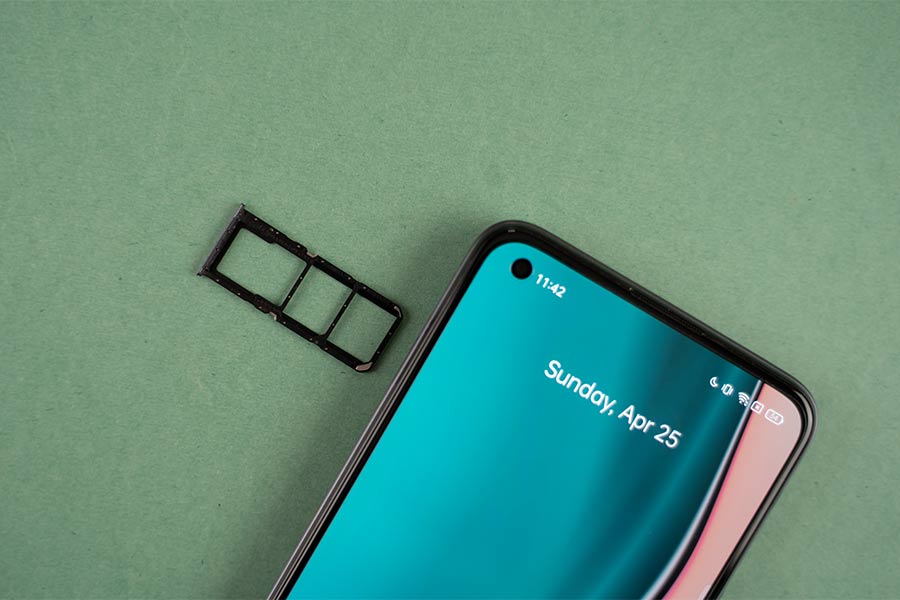


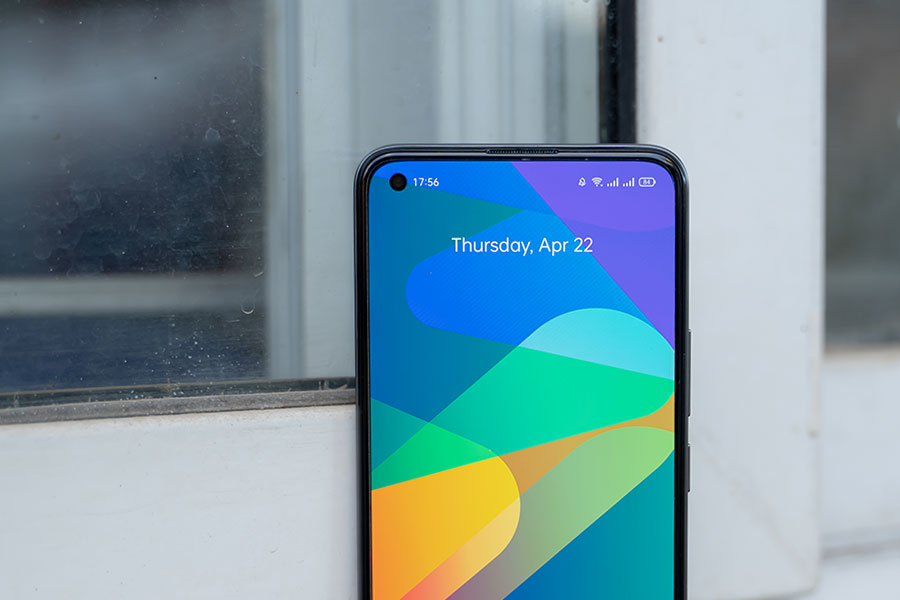
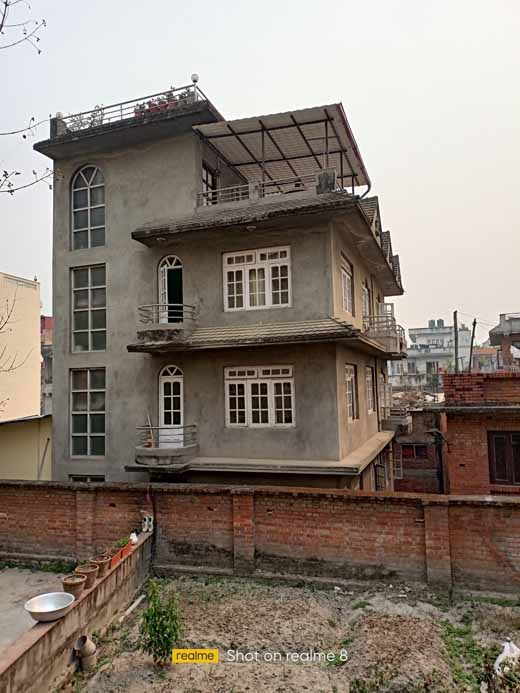

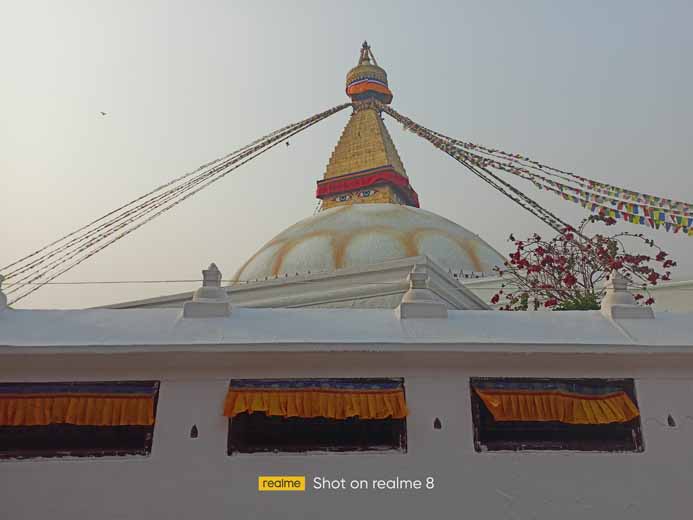
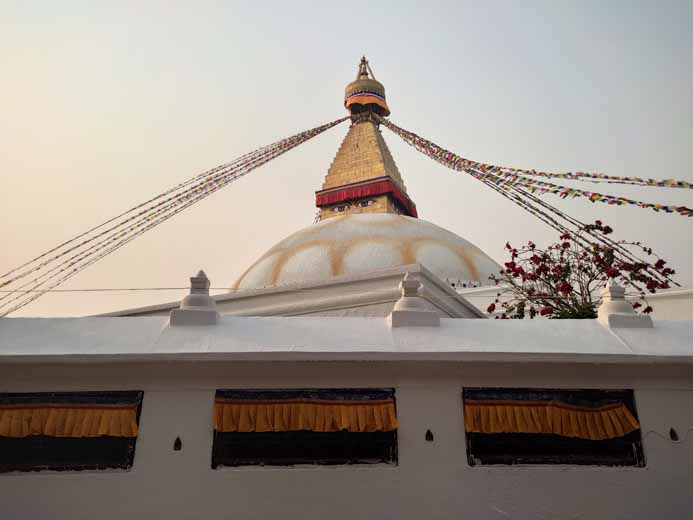
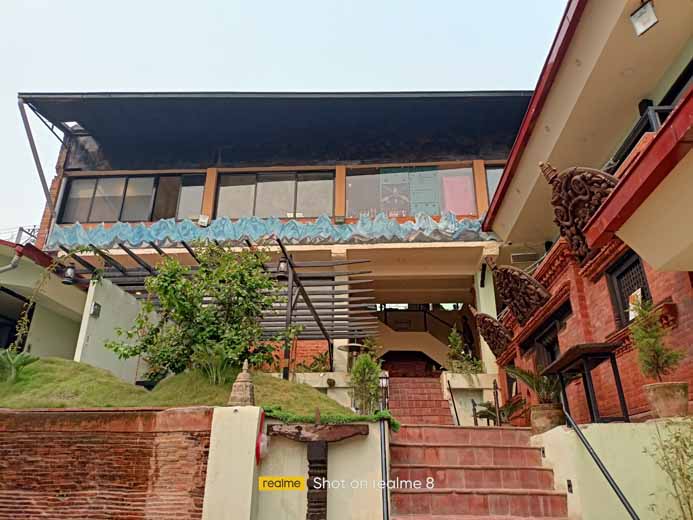
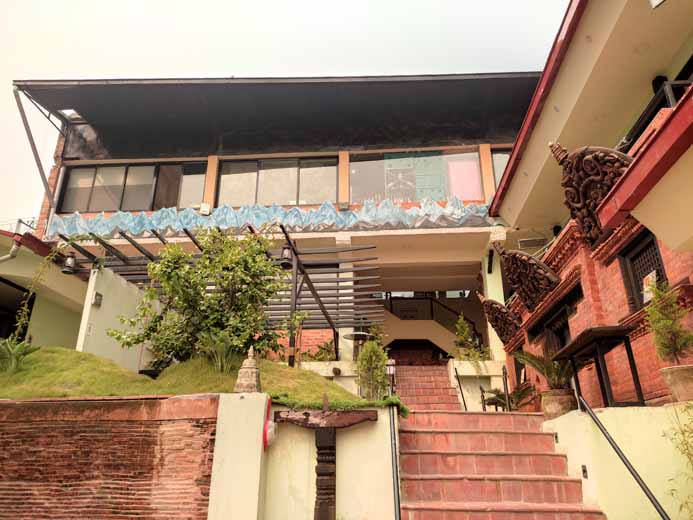
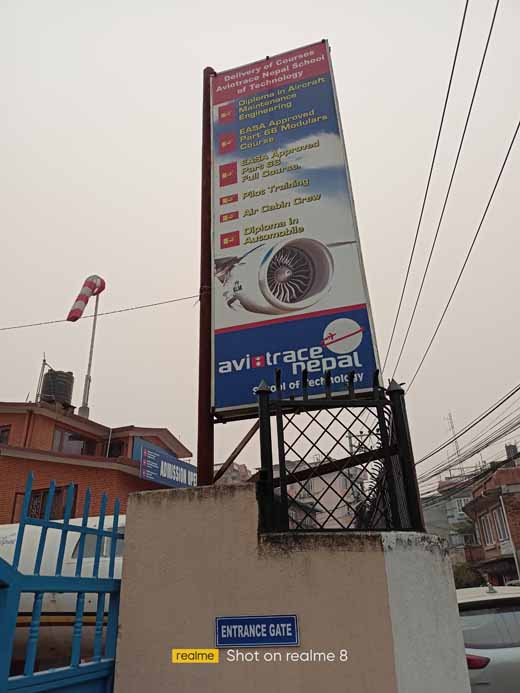

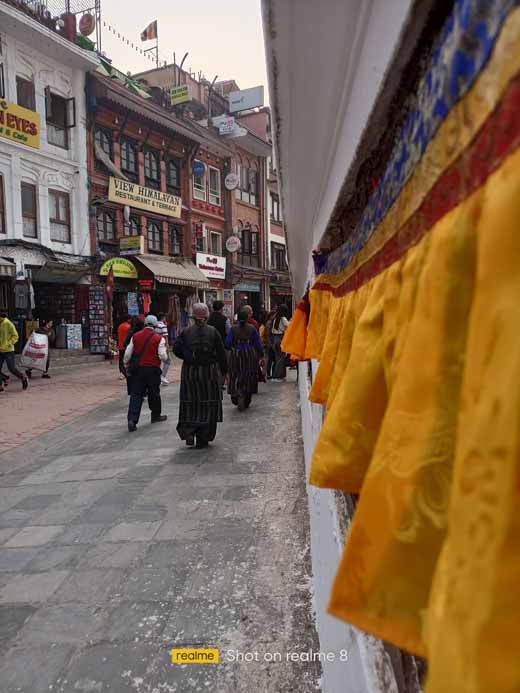
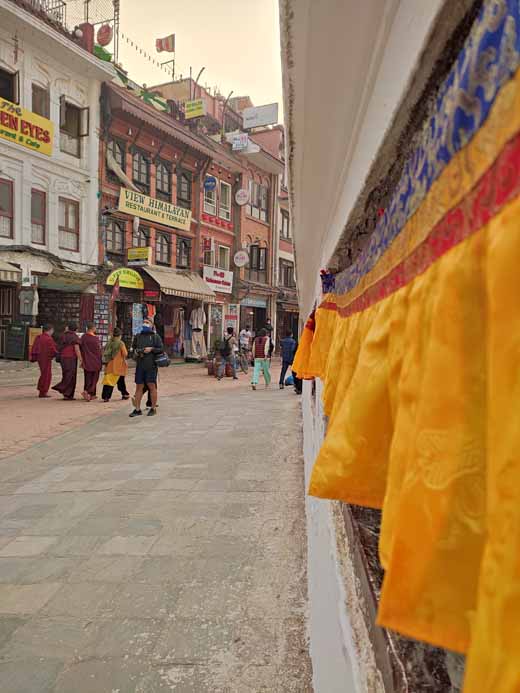
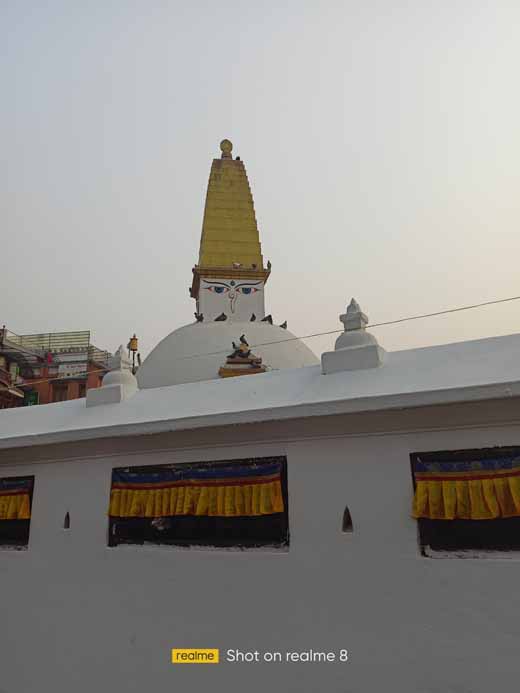



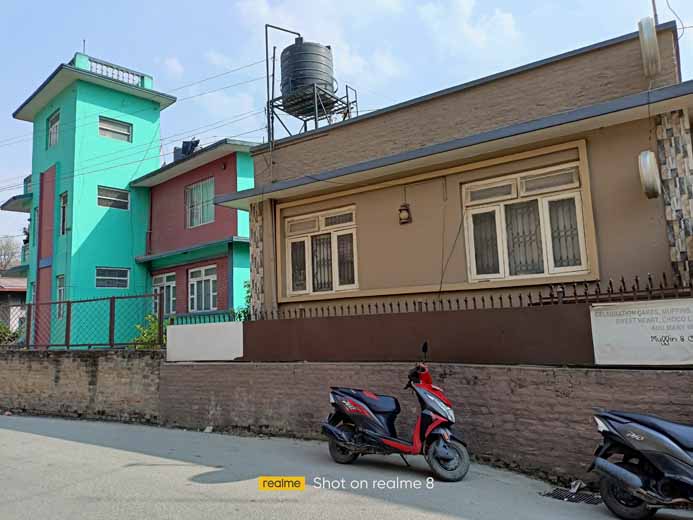
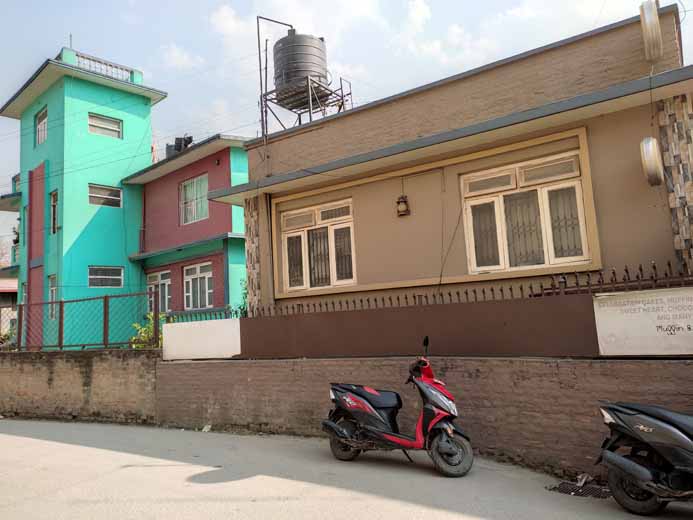
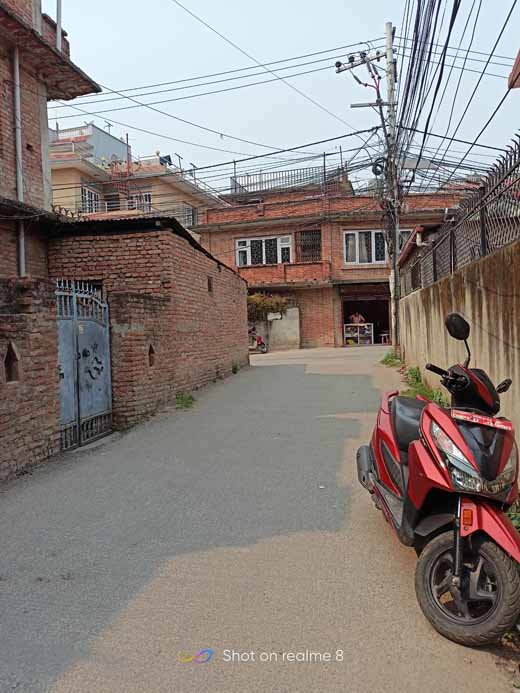
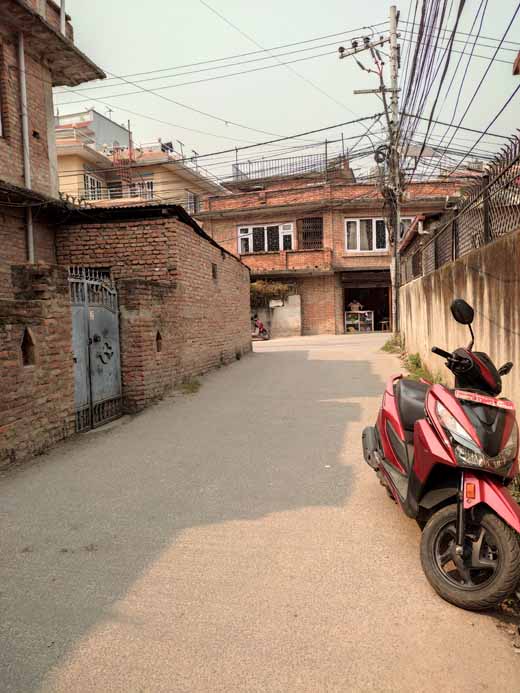
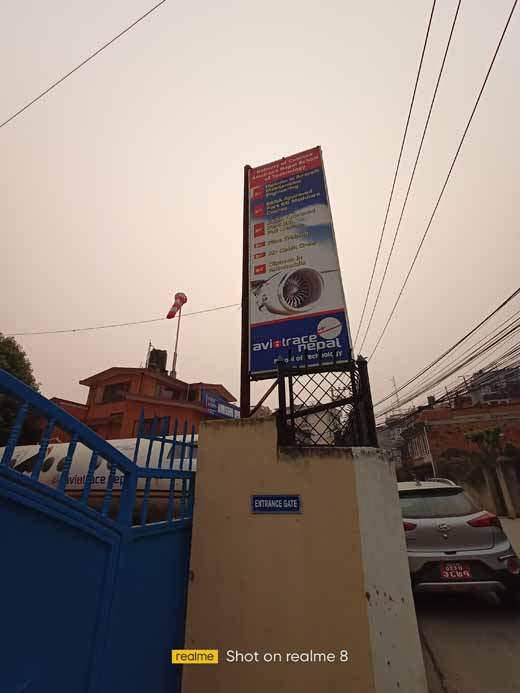


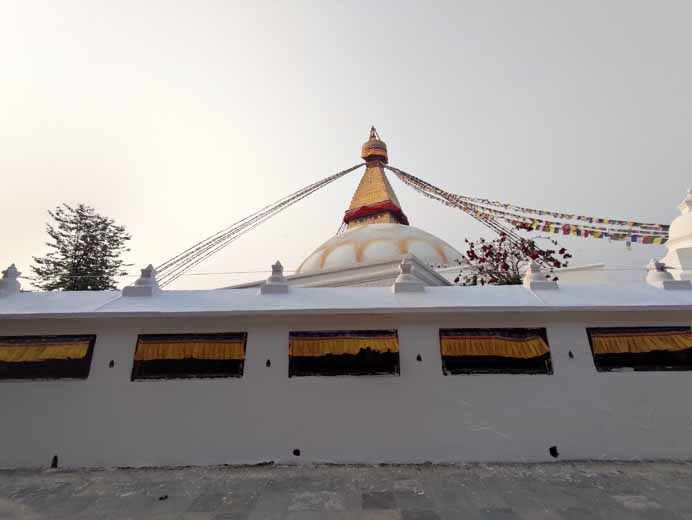
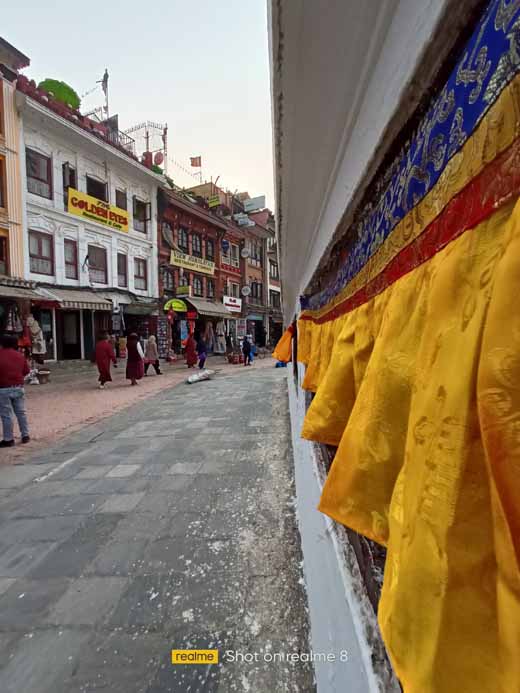
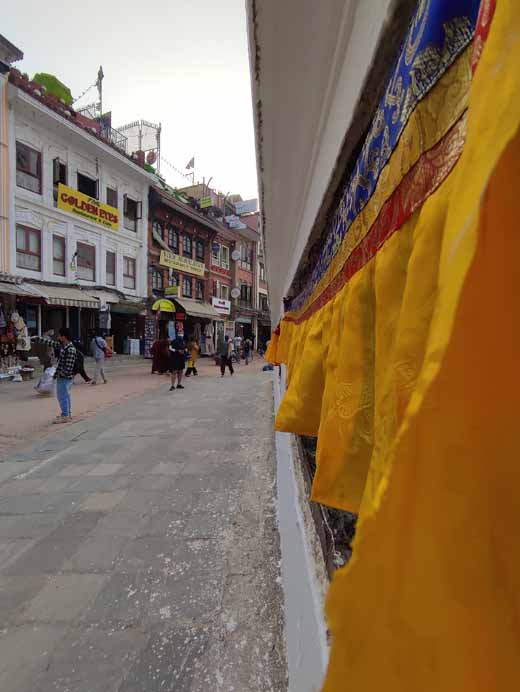
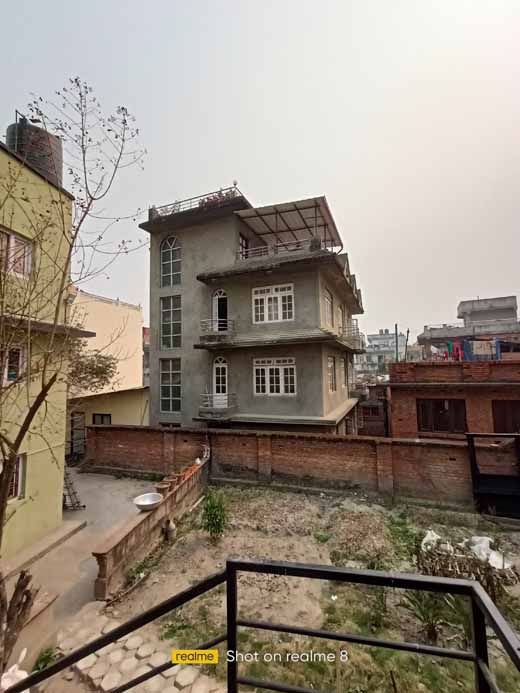
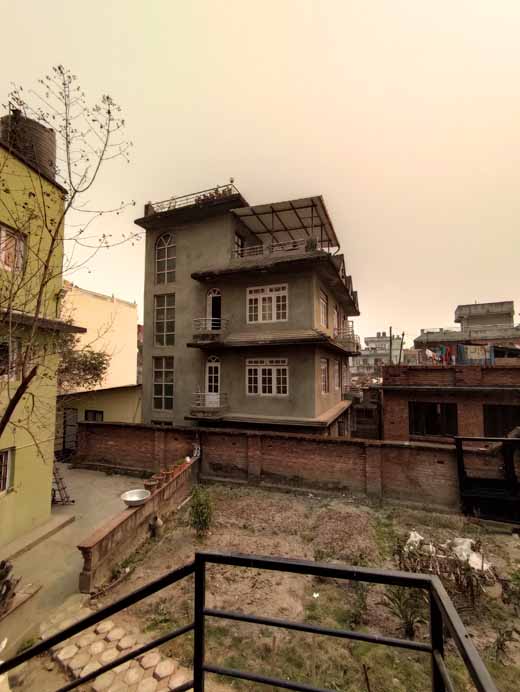

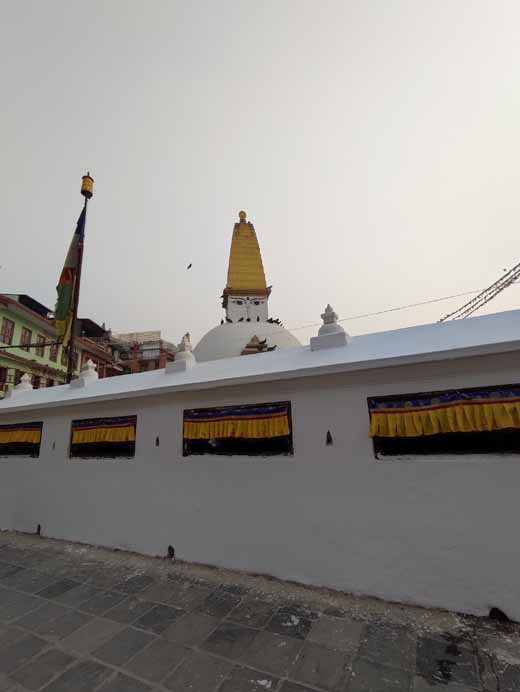


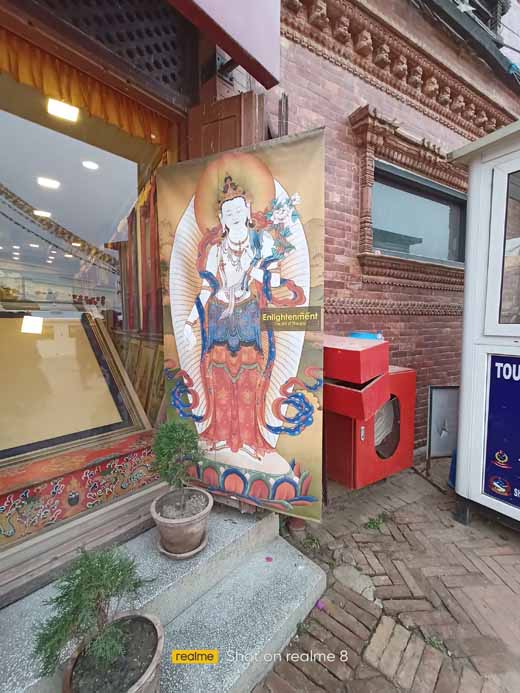
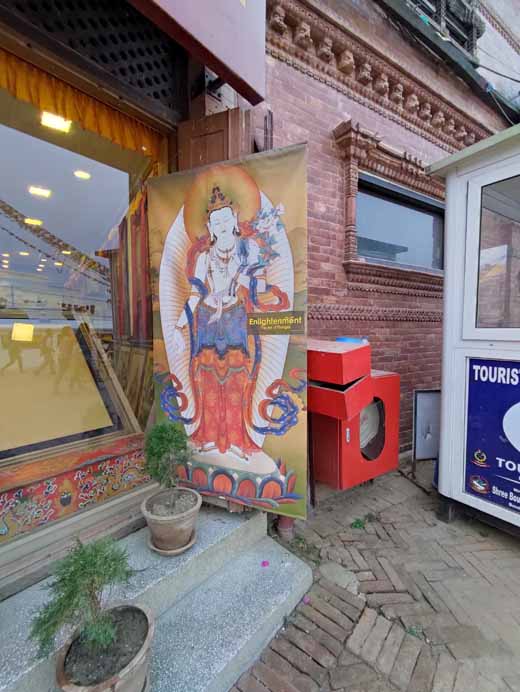


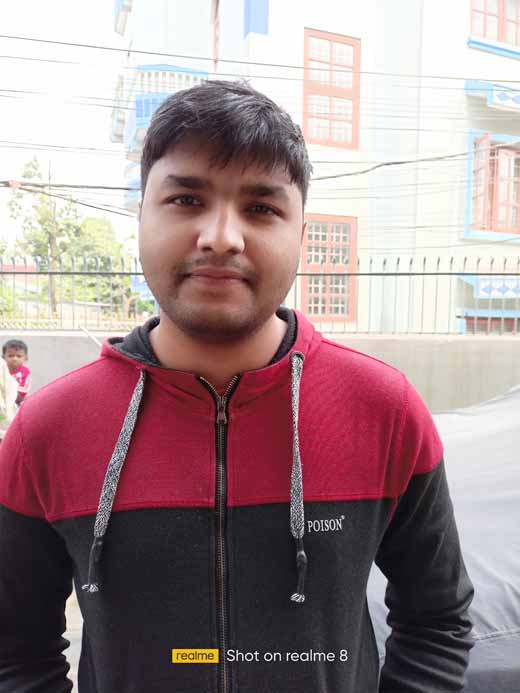


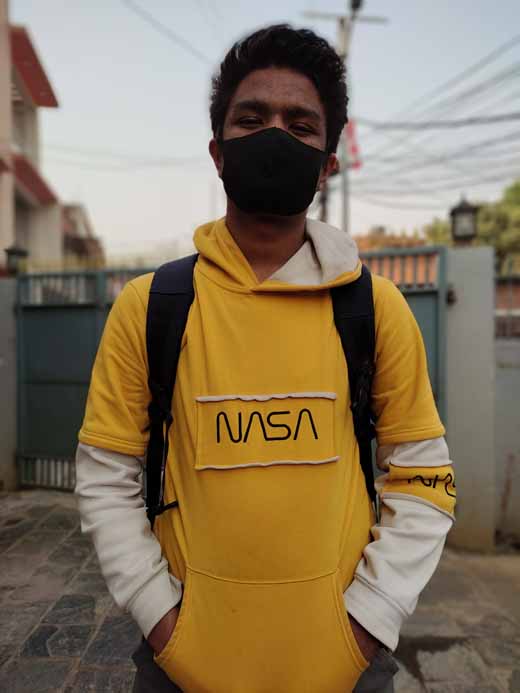




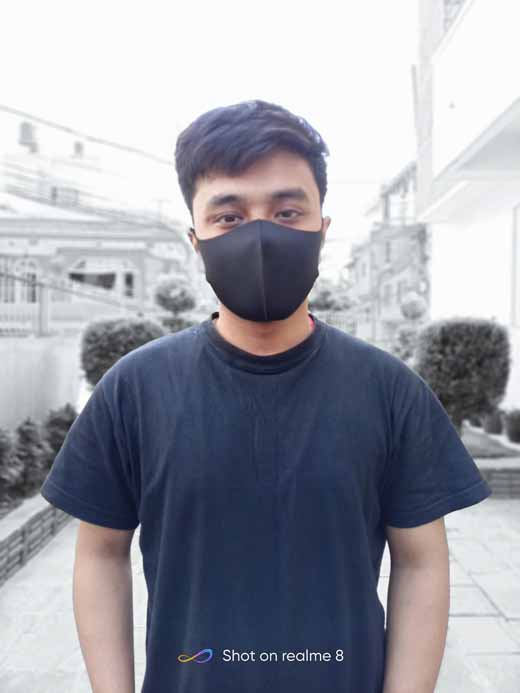
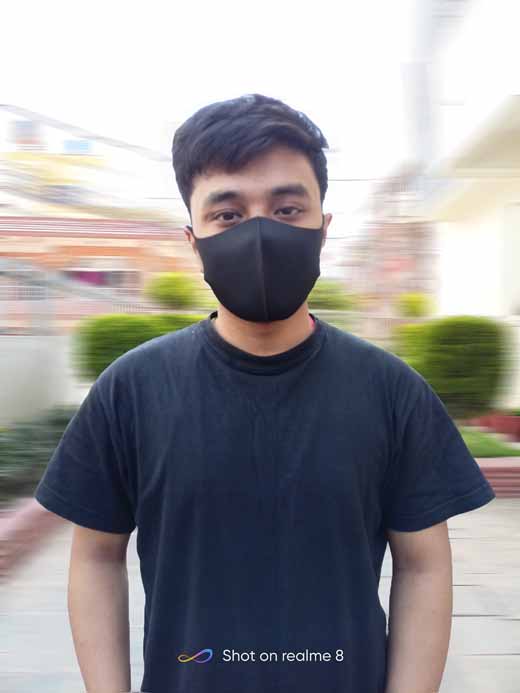
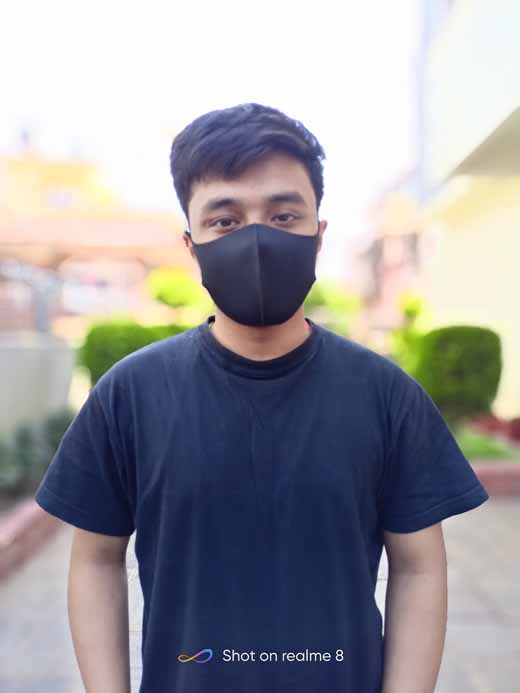
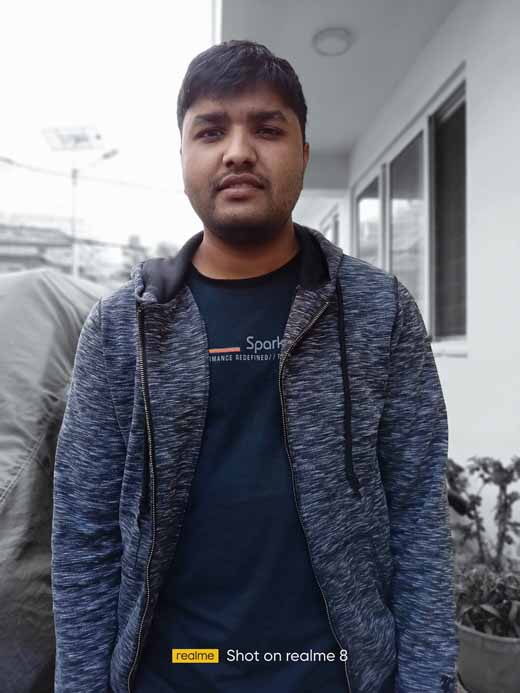






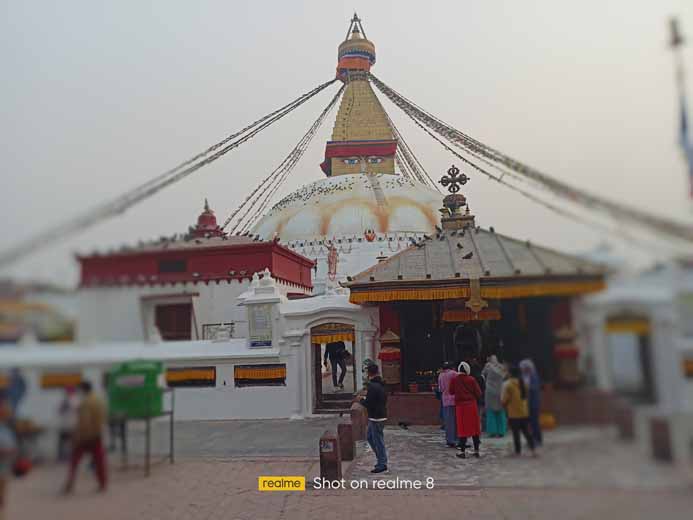
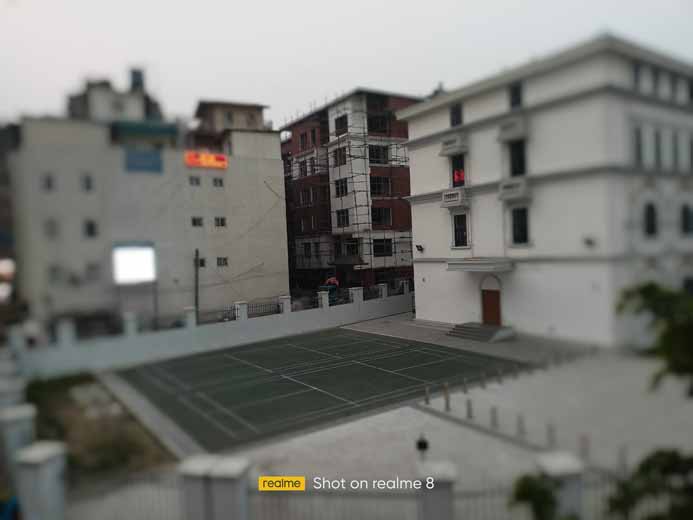











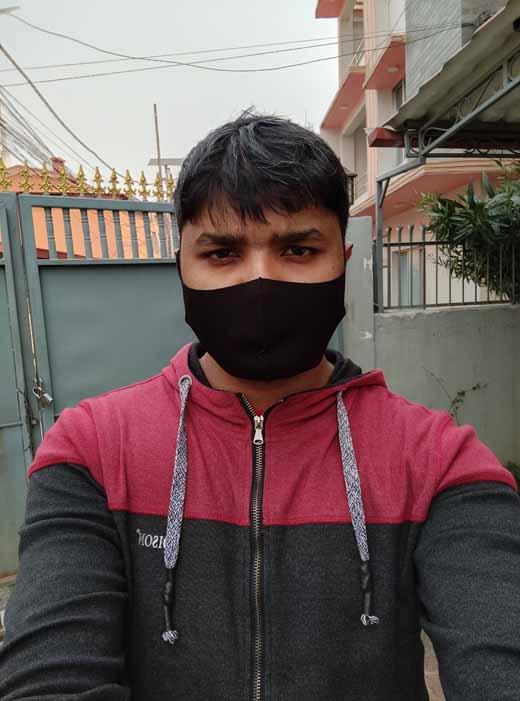



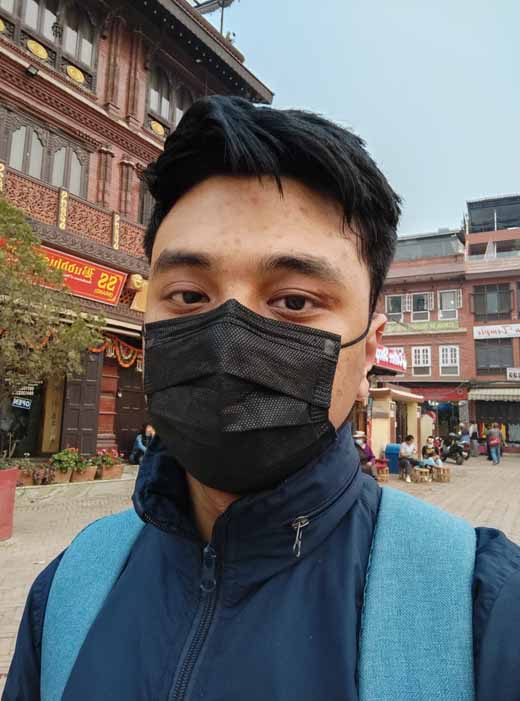


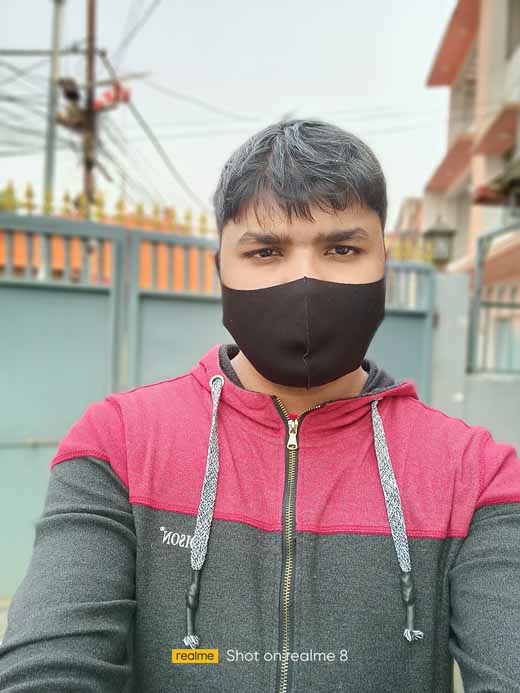
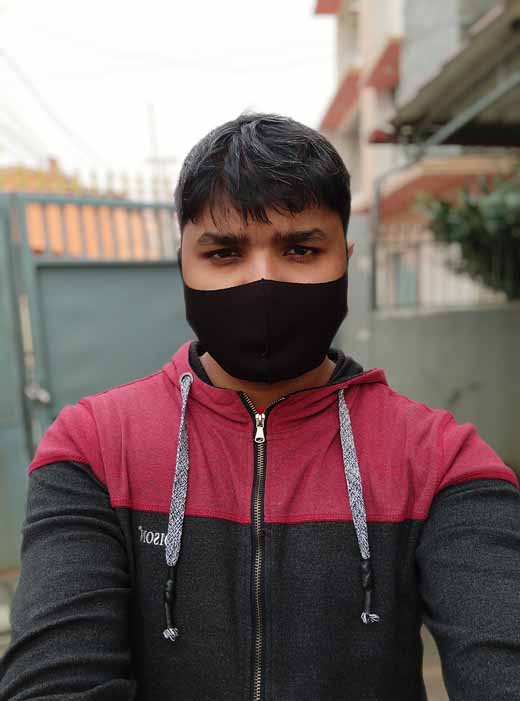


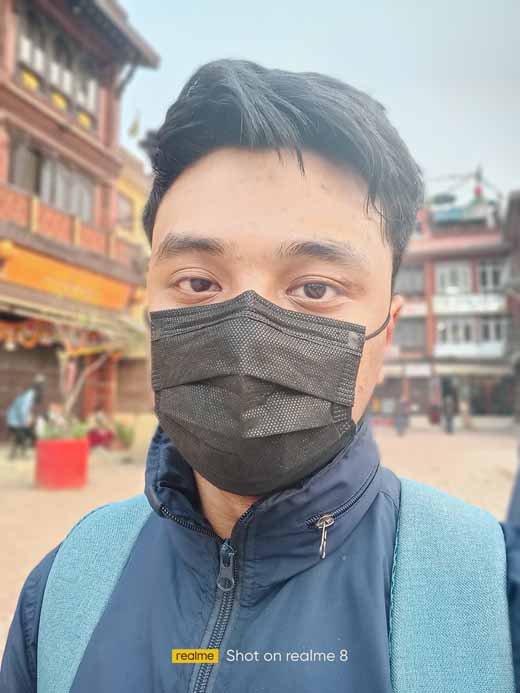

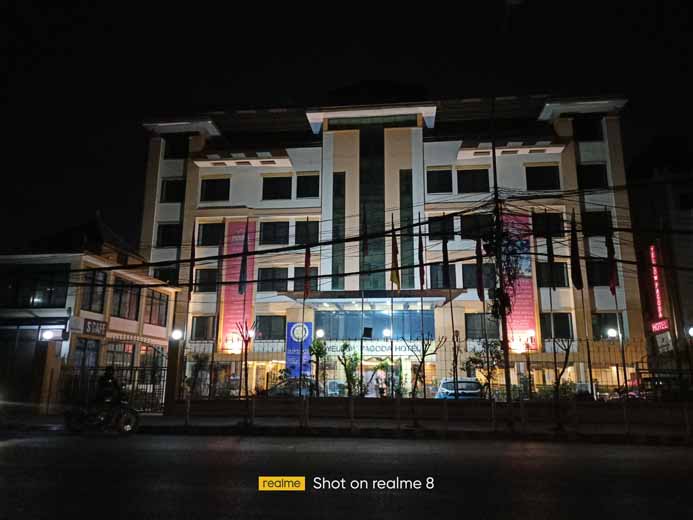
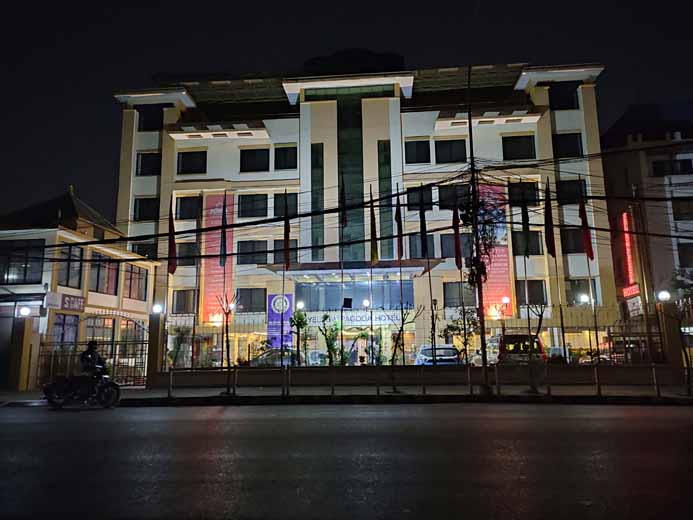
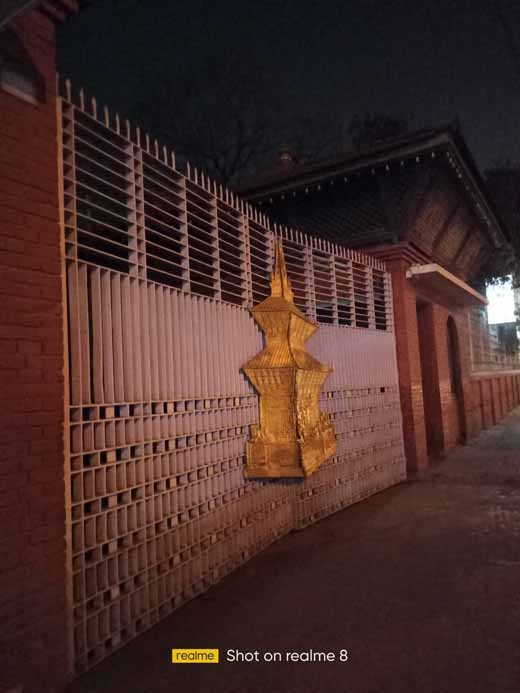
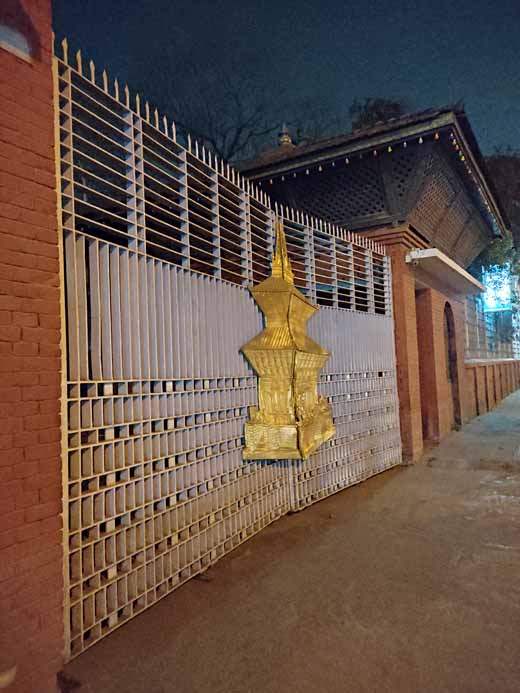
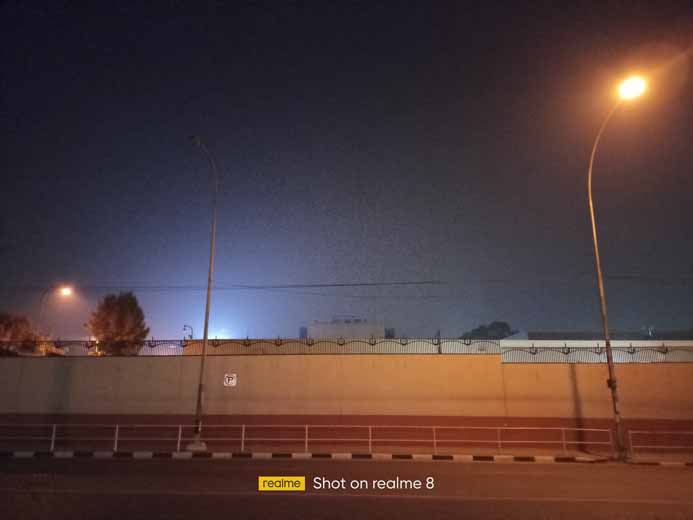
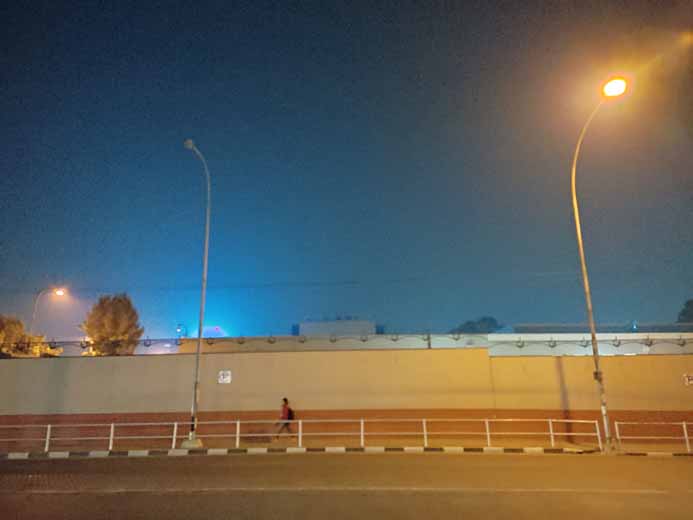
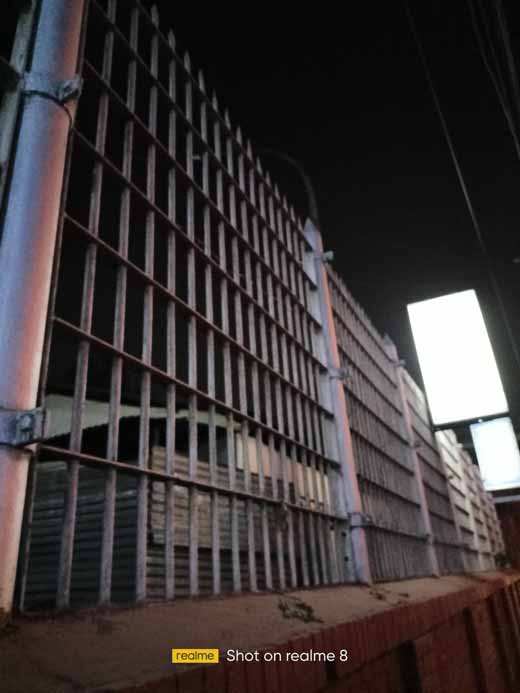

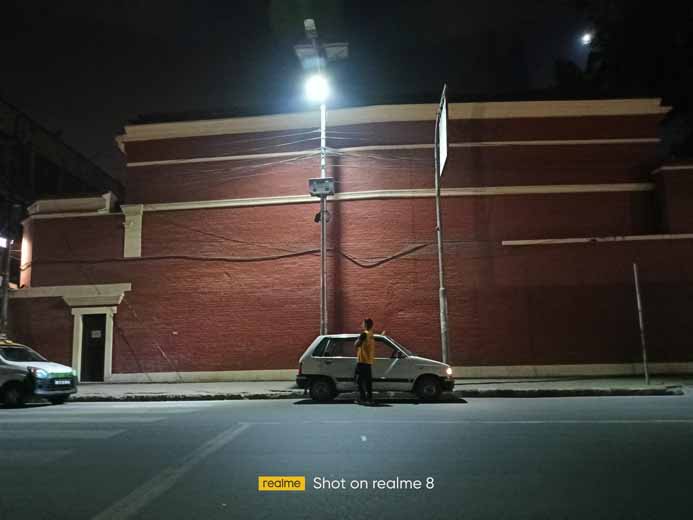
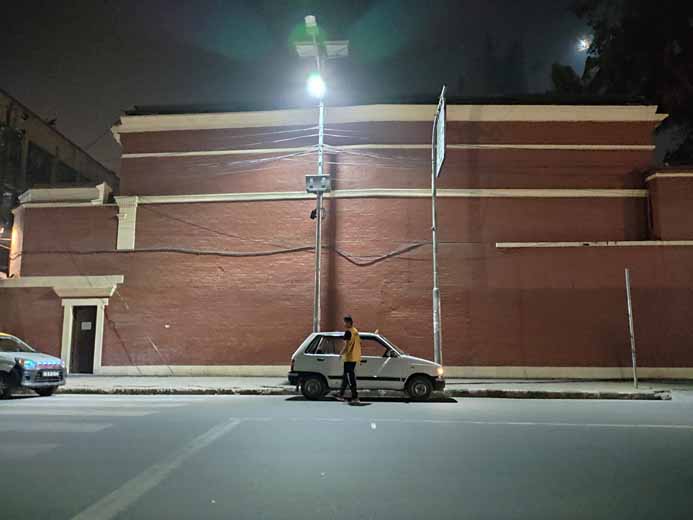
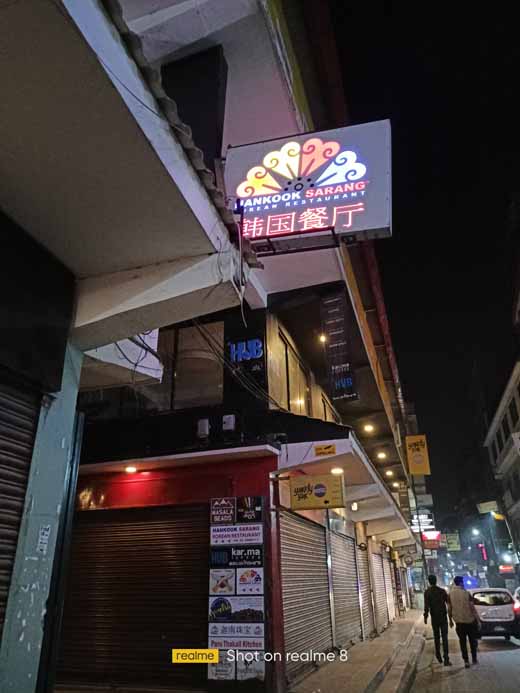
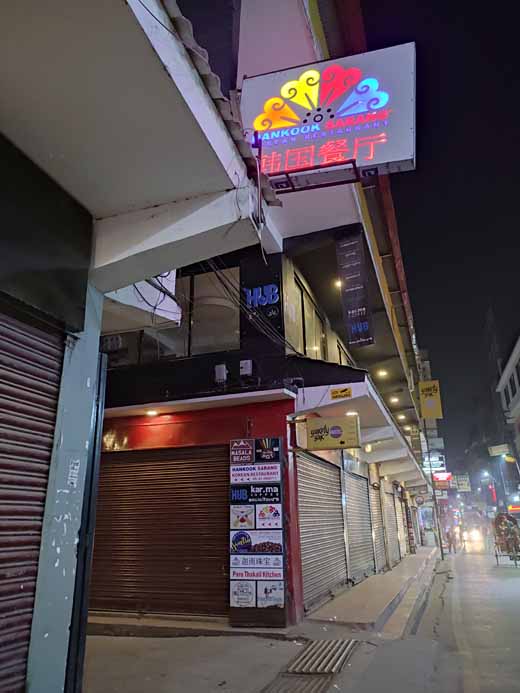

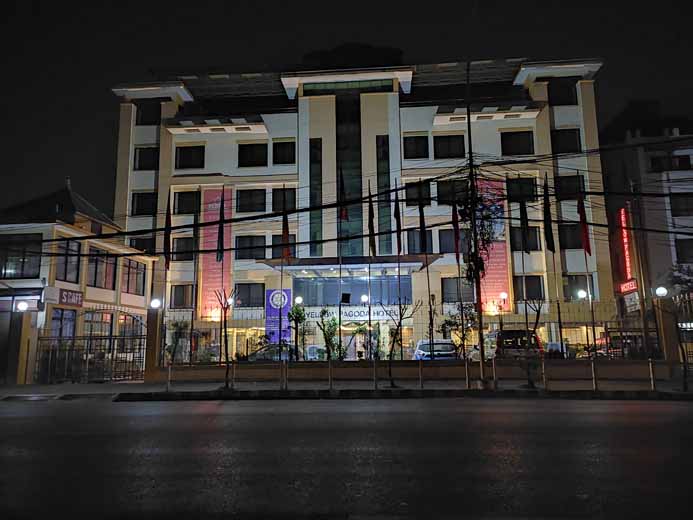
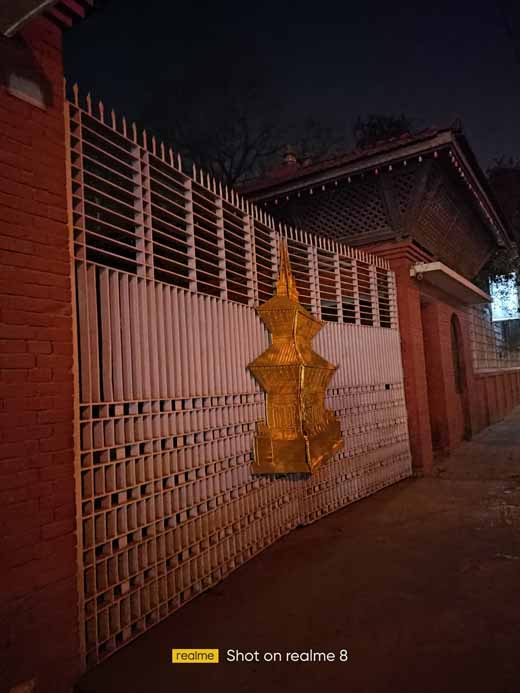



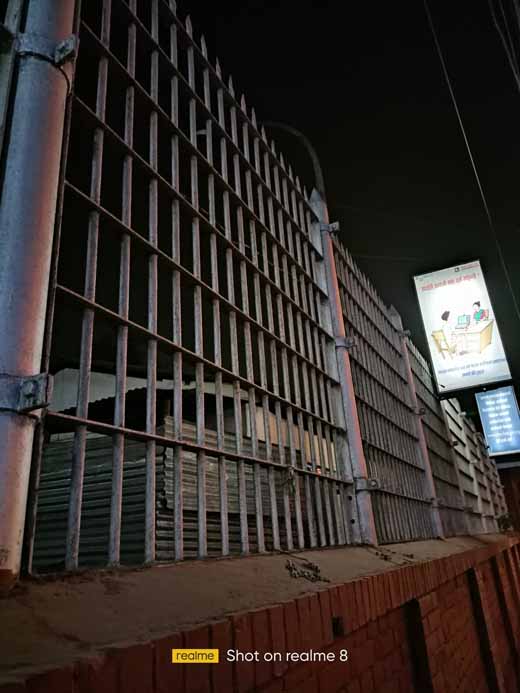
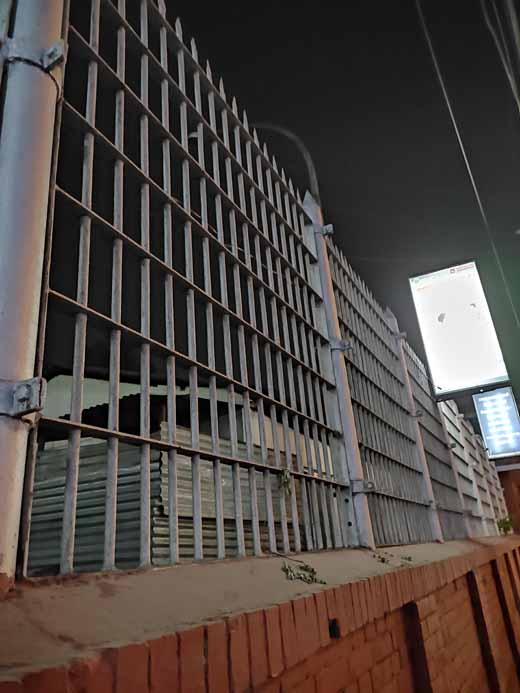
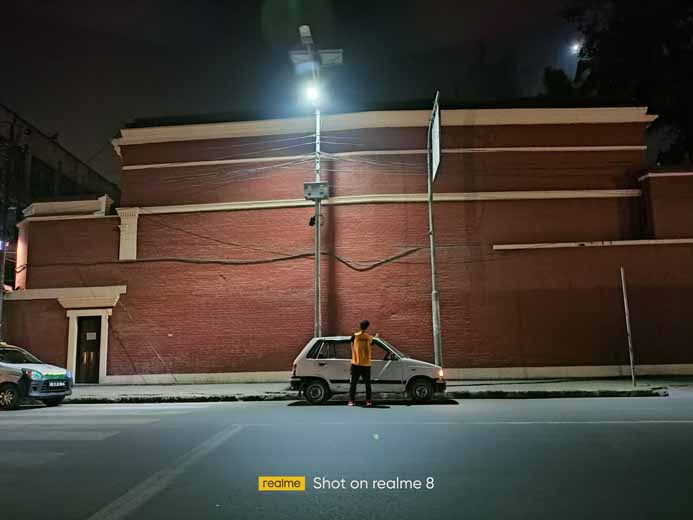
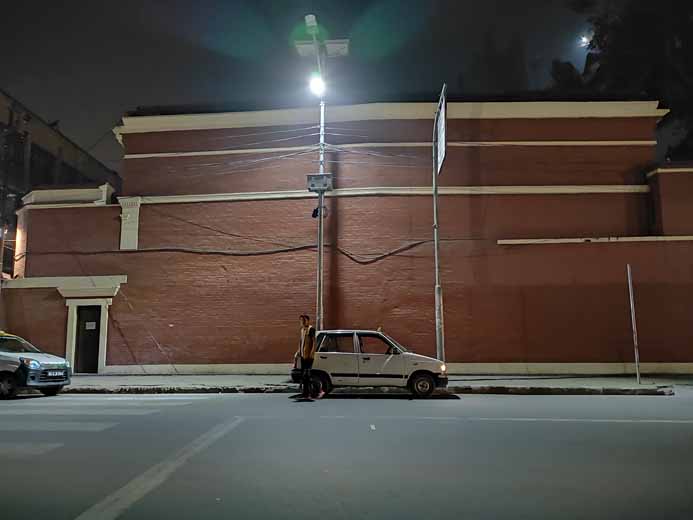
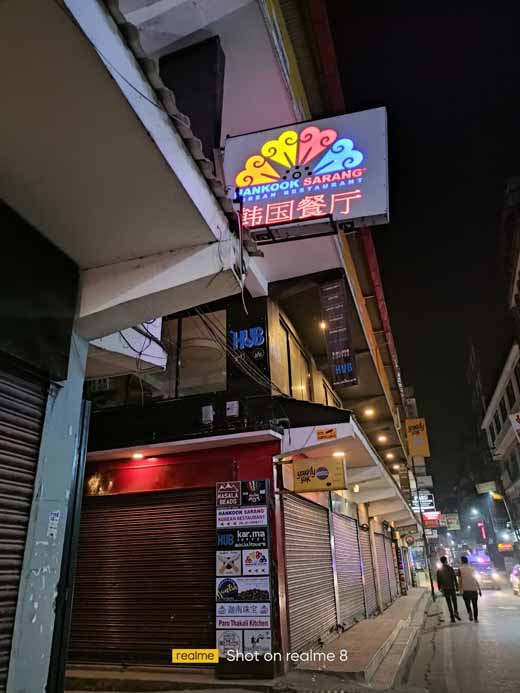
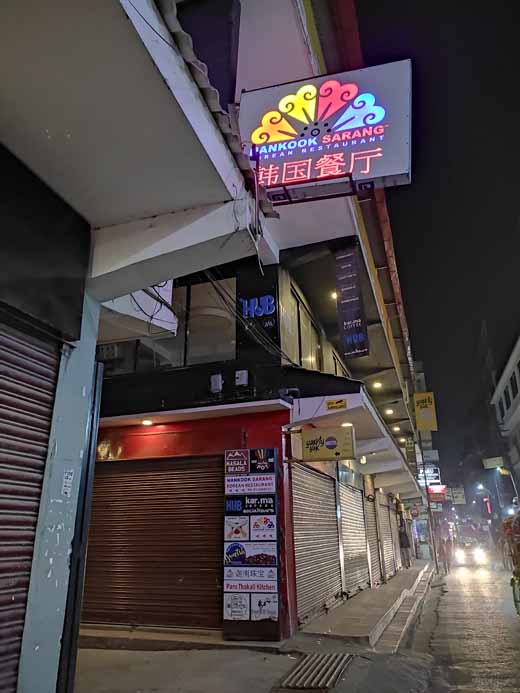

![Best Gaming Laptops in Nepal Under Rs. 250,000 (रु 2.5 Lakhs) [2025] Best Gaming Laptops Under 2.5 lakhs in Nepal [Feb 2025 Update]](https://cdn.gadgetbytenepal.com/wp-content/uploads/2025/02/Best-Gaming-Laptops-Under-2.5-lakhs-in-Nepal-Feb-2025-Update.jpg)
![Best Gaming Laptops in Nepal Under Rs. 120,000 (रु 1.2 Lakhs) [2025] Best Budget Gaming Laptops Under Rs 120000 in Nepal 2025 Update](https://cdn.gadgetbytenepal.com/wp-content/uploads/2025/05/Best-Budget-Gaming-Laptops-Under-Rs-120000-in-Nepal-2024-Update.jpg)
![Best Laptops Under Rs. 80,000 in Nepal [2025] Best Laptops Under 80,000 in Nepal March 2025 Update](https://cdn.gadgetbytenepal.com/wp-content/uploads/2025/03/Best-Laptops-Under-80000-in-Nepal-March-2025-Update.jpg)
![Best Laptops Under Rs. 70,000 in Nepal [2025] Best Laptops Under 70,000 in Nepal March 2025 Update](https://cdn.gadgetbytenepal.com/wp-content/uploads/2025/01/Best-Laptops-Under-70000-in-Nepal-March-2025-Update.jpg)
![Best Gaming Laptops in Nepal Under Rs. 200,000 (रु 2 Lakhs) [2025] Best gaming lapotp under 2 lakhs Nepal Feb 2025](https://cdn.gadgetbytenepal.com/wp-content/uploads/2025/01/Best-Gaming-Laptops-Under-2-Lakh-Nepal-Feb-2025-Update.jpg)
![Best Mobile Phones Under Rs. 15,000 in Nepal [Updated 2025] Best Phones Under 15000 in Nepal 2024 Budget Smartphones Cheap Affordable](https://cdn.gadgetbytenepal.com/wp-content/uploads/2024/03/Best-Phones-Under-15000-in-Nepal-2024.jpg)
![Best Mobile Phones Under Rs. 20,000 in Nepal [Updated] Best Mobile Phones Under NPR 20000 in Nepal 2023 Updated Samsung Xiaomi Redmi POCO Realme Narzo Benco](https://cdn.gadgetbytenepal.com/wp-content/uploads/2024/01/Best-Phones-Under-20000-in-Nepal-2024.jpg)
![Best Mobile Phones Under Rs. 30,000 in Nepal [Updated 2025] Best Phones Under 30000 in Nepal](https://cdn.gadgetbytenepal.com/wp-content/uploads/2025/01/Best-Phones-Under-30000-in-Nepal.jpg)
![Best Mobile Phones Under Rs. 40,000 in Nepal [Updated 2025] Best Phones Under 40000 in Nepal 2024 Smartphones Mobile Midrange](https://cdn.gadgetbytenepal.com/wp-content/uploads/2024/02/Best-Phones-Under-40000-in-Nepal-2024.jpg)
![Best Mobile Phones Under Rs. 50,000 in Nepal [Updated 2025] Best Phones Under 50000 in Nepal](https://cdn.gadgetbytenepal.com/wp-content/uploads/2025/01/Best-Phones-Under-50000-in-Nepal.jpg)
![Best Flagship Smartphones To Buy In Nepal [Updated] Best flagship phone 2025](https://cdn.gadgetbytenepal.com/wp-content/uploads/2024/07/Best-Flagship-Phones-who-is-it-ft-1.jpg)